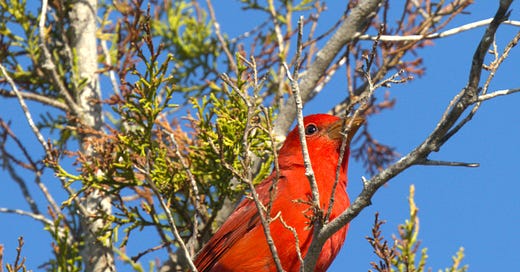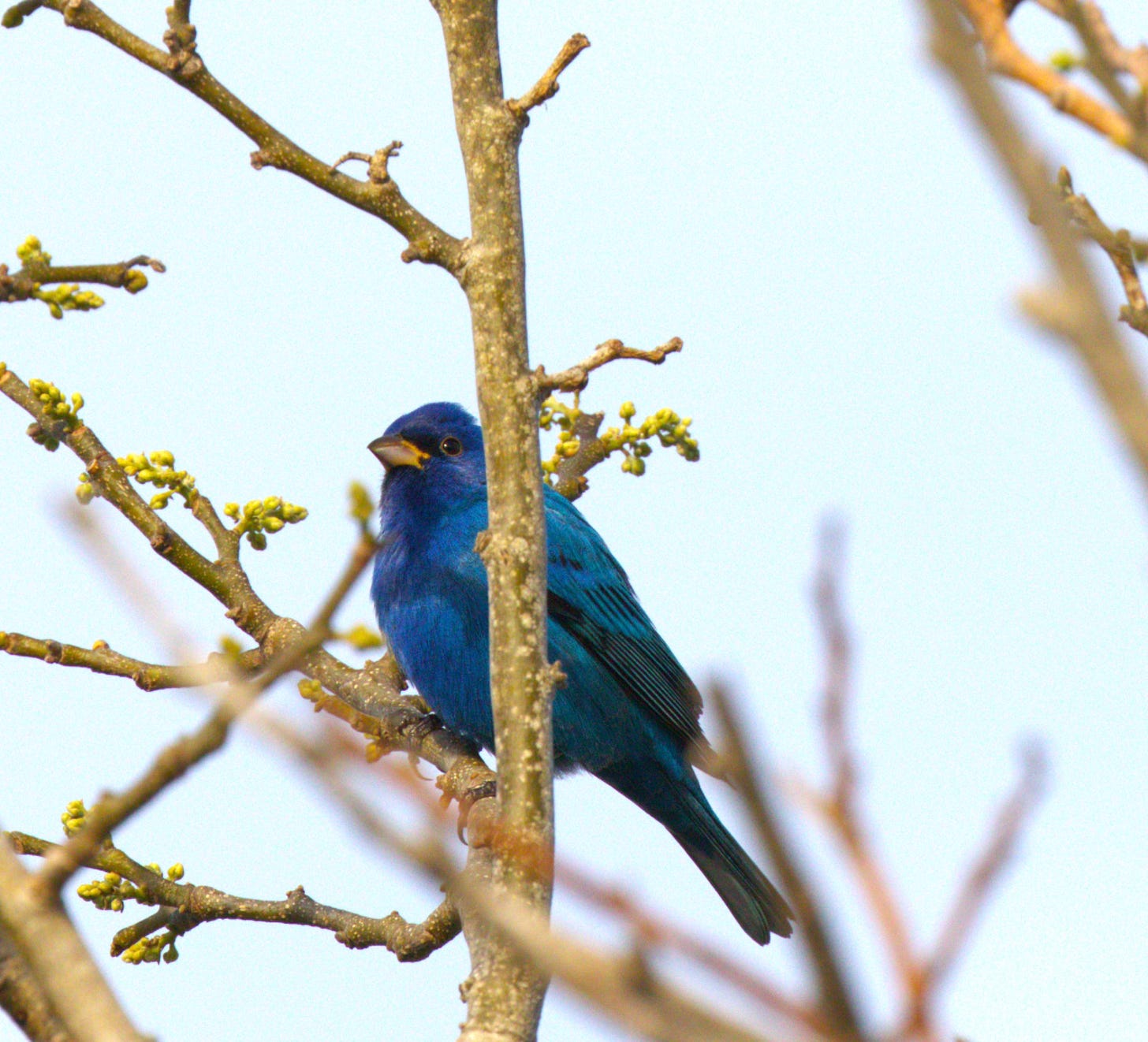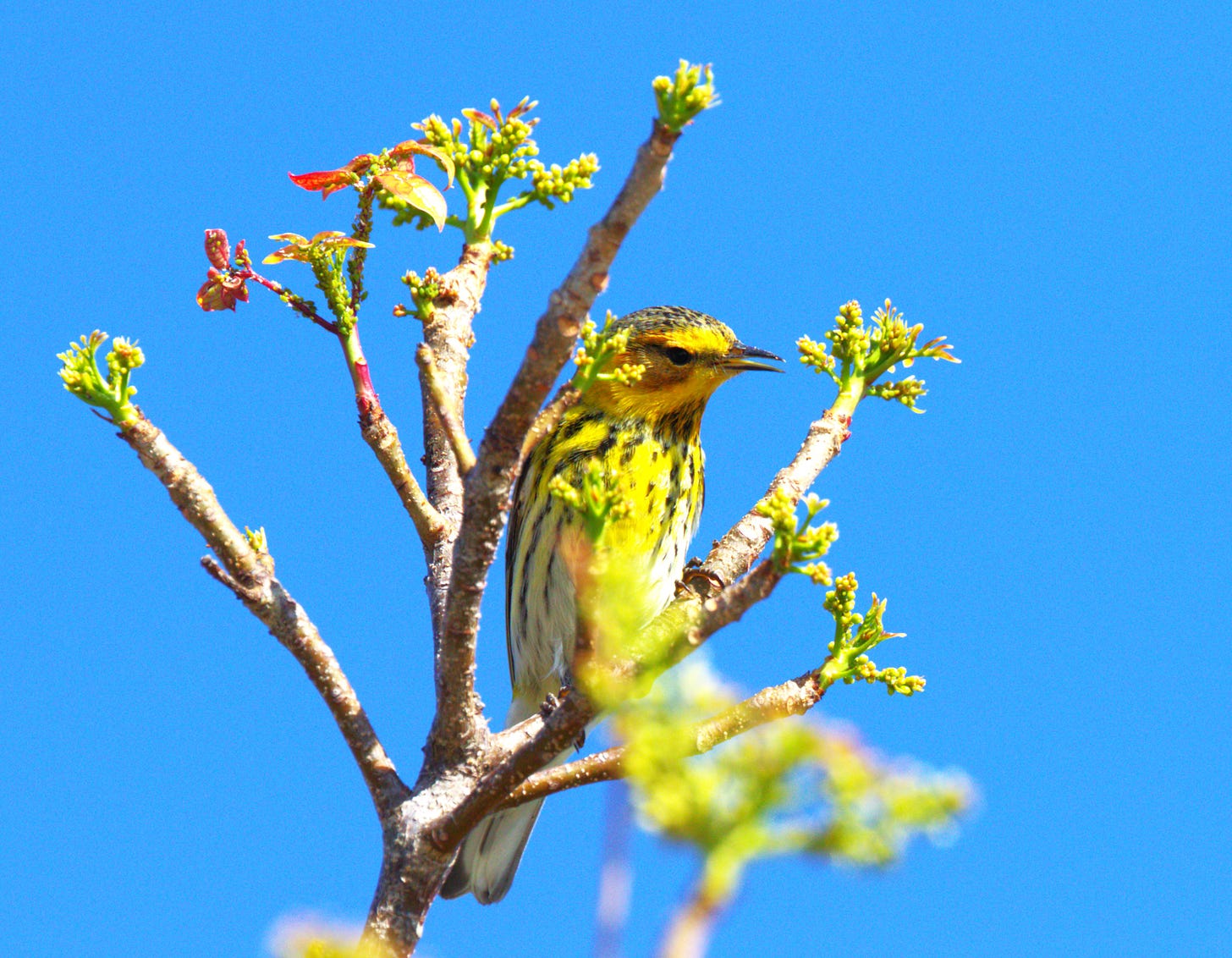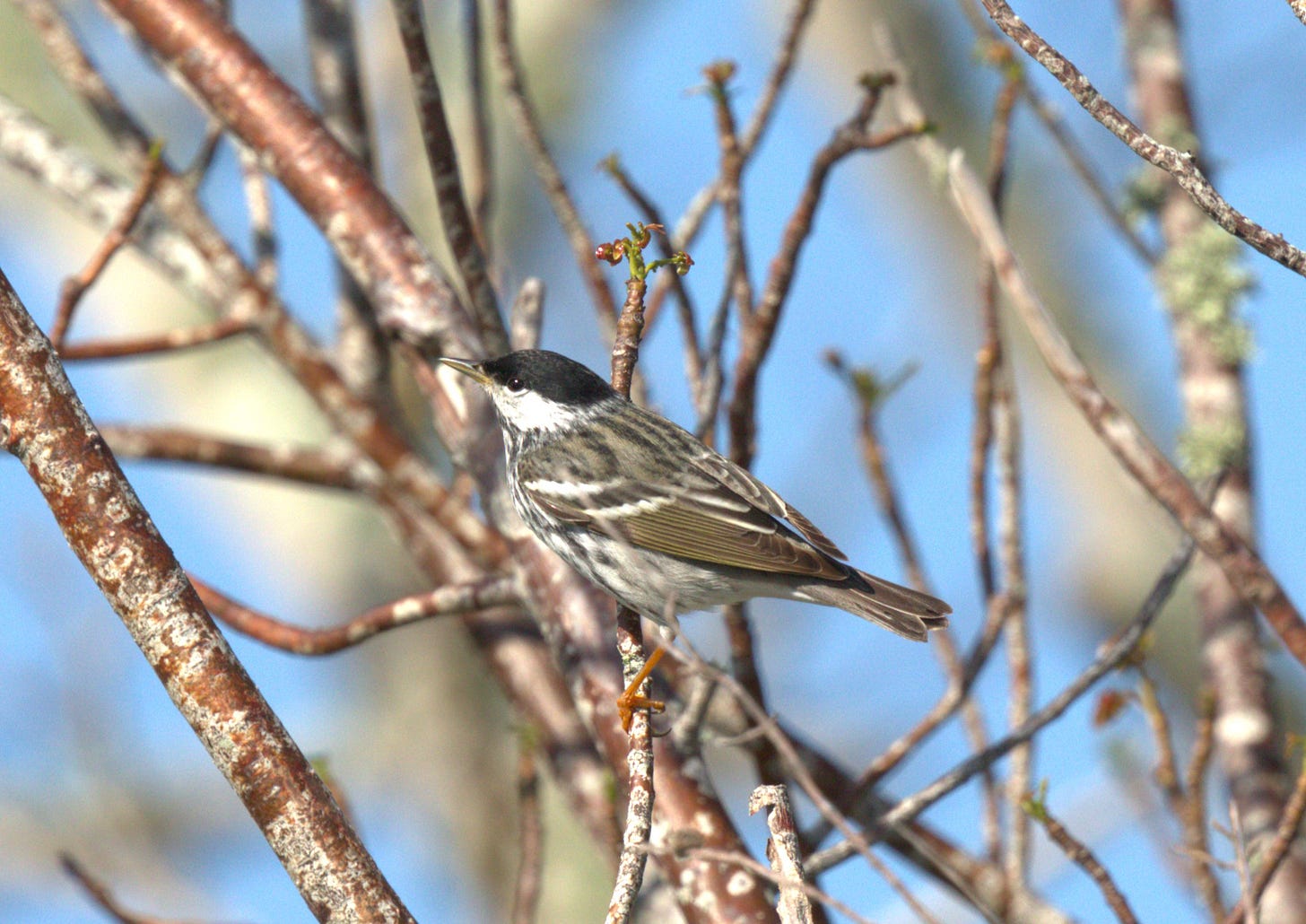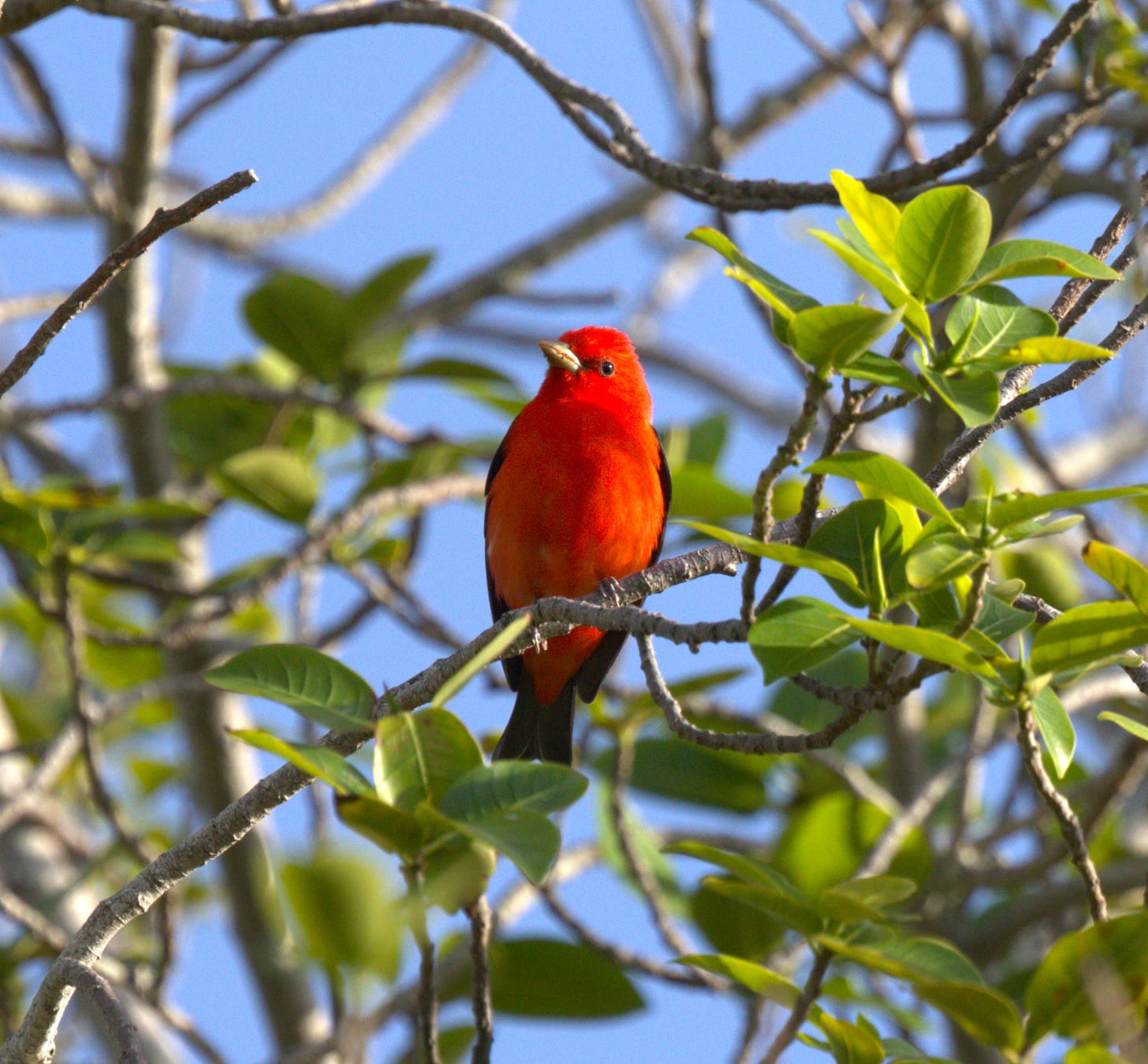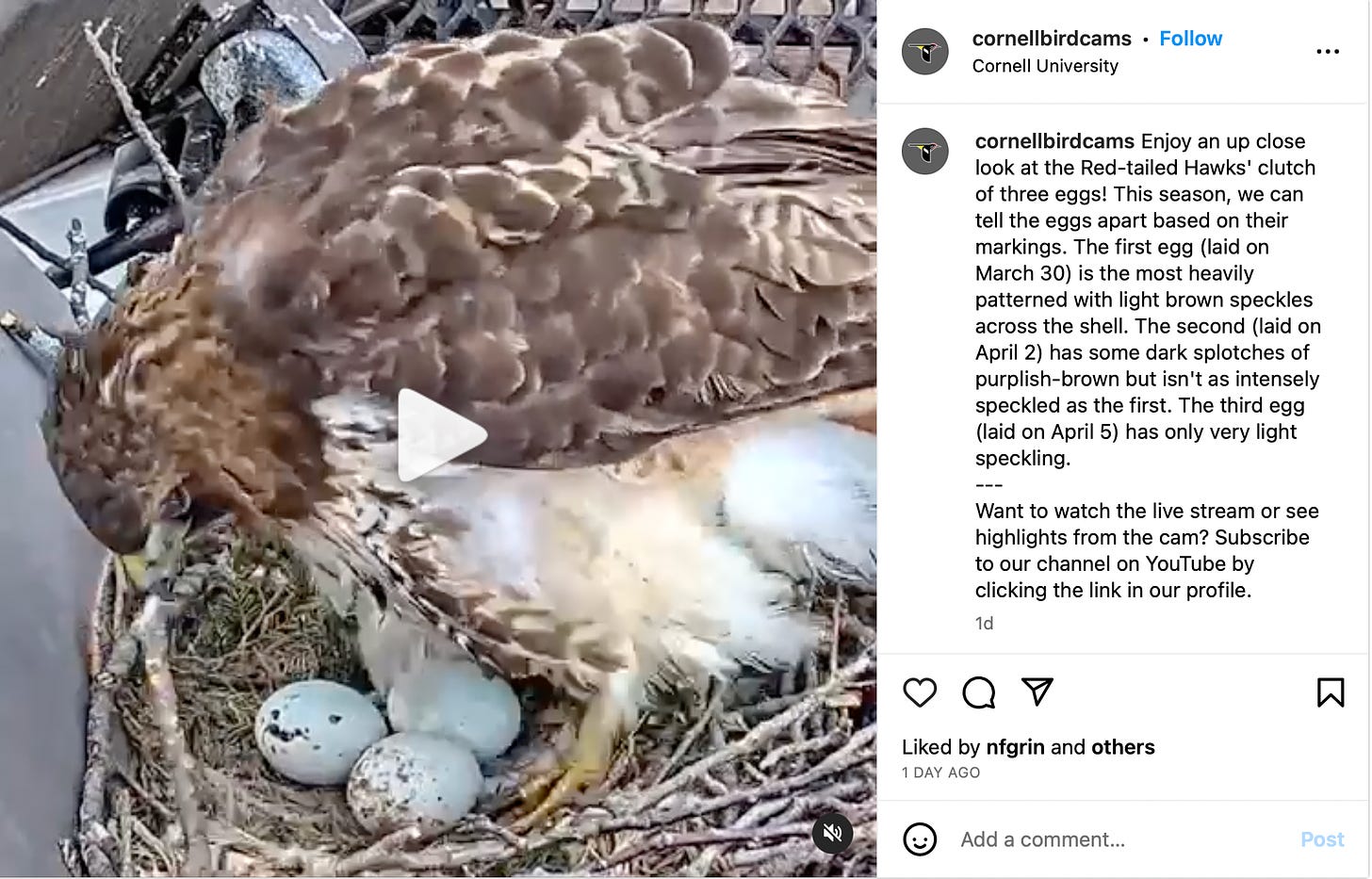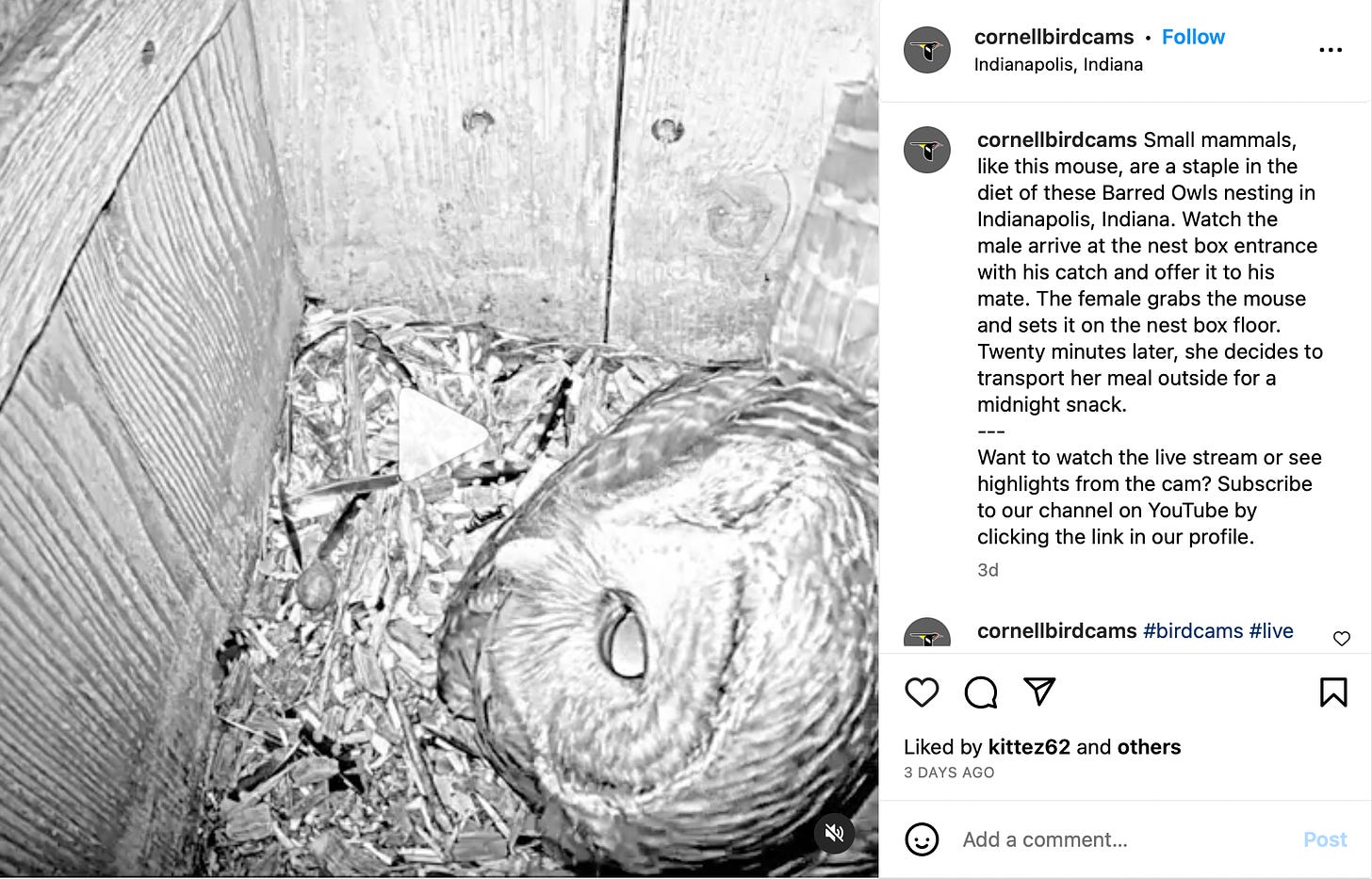1. Who knew critical habitat on the Pacific Flyway included a large dirt parking lot? Read on: The San Gabriel Mountains loom like an impregnable fortress for millions of migrating birds making their long and perilous journey to distant breeding grounds in the far north. But scientists recently discovered that many of these spring migrants use a surprisingly unassuming strategy to get over the peaks: They fly extremely low over a dirt parking lot wedged between steep slopes at the western end of the range. There is no simple answer to the phenomenon in the area known as Bear Divide, which has become a hot spot for avian research projects, about 30 miles north of Los Angeles. On a recent weekday, a dozen biologists armed with nets, calipers and notebooks gathered before daybreak at the Angeles National Forest site to take a full accounting of one of California’s great wildlife spectacles. (via The Los Angeles Times)
2. This is hilarious: The United States is home to more than 20 million pet parrots, highly intelligence creatures that need social connection and mental stimulation. A team of scientists wondered whether technology might help provide it. So they enrolled 18 parrots and their owners in an unusual experiment: Would the birds connect over video calls? (via The New York Times)
3. “That changes everything.” Great piece on BirdCast in the NY Times: Some events are simply too big for us to fathom. Bird migration, for instance, happens twice a year on a planetary scale that bruises the brain, so we’re forced to look for evidence in the traces around us: Skeins of geese and vanguards of vireos in the sky; a four-day mob of warblers passing through the neighborhood on their way from somewhere to somewhere else. BirdCast lets us look down from above, and that changes everything. A joint project of the Cornell Lab of Ornithology, Colorado State University and U. Mass Amherst, it’s a website that lets us see them from a vantage point hundreds of miles above Earth, capturing each night’s continental migration as collected by over 140 radar stations across the country — data gathered about birds on the wing. (via The New York Times)
4. More on BirdCast, the invaluable tech tool for birders (and scientists!): Ask Andrew Farnsworth about the origins of the BirdCast project, and he would describe it as “ancient history.” The year 1999, when the project was conceived, is a far cry from antiquity. But given how technology has helped transform the project since then, Farnsworth’s description might not be completely off the mark. BirdCast, in essence, is a project that tracks and forecasts bird migrations across the U.S. It uses weather radar data, in which birds also show up, to spot birds. Back when it was launched, scientists had the tedious task of manually poring through the chaotic radar data to differentiate between birds and meteorological phenomena like clouds. (via Mongabay)
5. The Rufous Hummingbird needs help; so do others. What we can do: The Rufous Hummingbird is magical. The male’s iridescent throat glows brighter than a shiny copper penny and like most hummingbirds, whizzes through the air curiously hovering right in front of humans who ponder them. Yet, the Rufous hummingbird lost two-thirds of its population since 1970, according to the 2022 State of the Birds report. These tiny creatures are one of 70 bird species on the “Tipping Point” list that will lose another fifty percent of their populations in the same time frame if conservation doesn’t improve. That list includes such flying beauties as the Golden-winged warbler with its stunning yellow cap and black mask. So why should we care that birds are disappearing? One reason, says Parr, is their losses are a harbinger of what human beings face too. (via CNN)
6. She’s back! Gabby – a 14 year-old Piping Plover - returns to Lake Michigan shores for another breeding season: At 14, Of,gb:X,Y — better known as Gabby — is the oldest living Great Lakes piping plover, an endangered, migratory bird that recently flew to the Sleeping Bear Dunes to reproduce. She is being tracked through an effort coordinated by the U.S. Fish and Wildlife Service. Gabby's return to Michigan is "a huge relief," the Great Lakes Piping Plover Recovery team noted on social media. As we approach Earth Day on Saturday, she shows us how such small, seemingly fragile creatures, can do remarkable things. Gabby goes between Michigan and Florida — sometimes in just a matter of days. She also reminds us just how vital it is to protect the planet. (via Detroit Free Press)
7. Latest on Murphy, the male Bald Eagle who was incubating a rock when we first met him: Over several weeks, Murphy had become so protective of his rock that he wouldn’t allow the other four eagles near his side of the enclosure. While Murphy had not incubated like that before, it’s not uncommon for birds during the spring breeding season when their hormones run high. A few days after Murphy had started to protect his “rock baby” too aggressively, on April 4, the sanctuary staff moved him to a separate, private enclosure, she said. Little did Murphy know that soon he’d have a real chick under his wings. That same week, rescuers brought a baby eaglet to the sanctuary from Ste. Genevieve, Mo., following a windstorm that had blown its nest down. After the eaglet was checked for injuries, the sanctuary staff’s next task was to figure out which eagle to bond it with. They wanted to avoid any imprints with humans, as that would prevent it from being released back into the wild. Murphy was “the best choice.” (via The Washington Post)
8. This is kind of fun: People don’t generally assume that birds are smart. You hear the phrase “bird brain” for a reason, after all! However, our feathered friends may be much more intelligent than we have given them credit for. The truth is that many birds have astounding abilities. They may not be as smart as the average adult human, but many birds have been shown to have cognitive abilities comparable to those of young children. You might be quite surprised when you hear about the smartest birds in the world. However, the list of the smartest birds in the United States is also quite impressive. Read on to learn all about the smartest birds flying around the United States! (via A-Z Animals)
9. Song birds need practice…singing? What one study of zebra finches tells us: Songbirds may need to practice singing every day to maintain the quality of their performance. Male zebra finches (Taeniopygia guttata) learn a unique song, usually from their father, in the first 90 days of their life. They then sing thousands of variations of that same song daily throughout their lifetime. As they age, the song’s structure is maintained, but the bird sings at a lower pitch and for a shorter length of time. These recordings were taken by Satoshi Kojima at the Korea Brain Research Institute in Daegu, South Korea. The songs are generally used to attract a female partner, but it is unclear why the birds continue to sing when they are isolated from others, he says. (via New Scientist)
10. Grim – New research assessing biodiversity loss: Data on birds and mammals reveal there's a huge time lag between environmental change and its impact on animal populations, of up to 45 years depending on the species and the drivers of change. This means the historic 'peace pact with nature' pledged at the United Nation's Biodiversity Conference (COP 15) in December last year may already be out of date, as the extent of this lag was not taken into account in projections of future losses. "There is wide recognition that time is short for the integrated, ambitious actions needed to stop biodiversity loss by 2050," write Natural History Museum zoologist Richard Cornford and colleagues. "This work shows that time is even shorter than had been thought." (via Science Alert)
11. Wait, he is doing what?: Dead birds are flying again — this time, as drones. On a New Mexico college campus, there’s a large field that many birds fly over. Lately, some of those birds have been dead. Mostafa Hassanalian, an engineering professor at the New Mexico Institute of Mining and Technology, is using drone technology to lift dead birds back into the sky. First, he stuffs an electric motor into a taxidermied bird. Then, he tosses it into the air. The bird soars for a few minutes, appearing alive from a distance. Hassanalian is studying the way the bird drones move in flight in hopes that the findings can improve aviation technology. (via The Washington Post)
12. Fun travel piece #1 - Kiwis in birding heaven (aka, Colombia): It's July 2022. "Why don’t we have Christmas with the family in Colorado," I say. "I think we should go to Colombia," he says. Rapidly I sort through elusive memories - what do I actually know about Colombia? I remember that it is between Panama and Ecuador, so it must be near the equator. Therefore it’s hot. And it must have mountains because it lies on the line of the great Cordillera ranges of mountains that run from Tierra del Fuego to Alaska. I visit eBird. There are almost 2000 species of birds in Colombia. Whoa. We book our tickets and our birdwatching tour. The itinerary arrives with names of total unfamiliarity: Manizales, Cali, Buga. We pay for it all, somehow, and his lordship orders the Colombian bird book. It must weigh a kilo! Every day I go to eBird and choose a bird picture from the Colombia list, then email it to his lordship for identification. We call it "Colombirdle." (via Otago Daily News)
13. Fun travel piece #2 – a birdwatching safari: Halfway through our birding safari in Botswana, my wife, our two sons, and I had somehow identified more than 150 winged species — no small feat for a family that had only recently taken up bird-watching as a hobby. We’d spotted giant kingfishers, pied kingfishers, and woodland kingfishers (the boys are big on kingfishers). We’d seen spindly saddle-billed storks and graceful herons, bee-eaters, sunbirds, and a difficult-to-find Pel’s fishing owl, with its orange feathers and black, marble-like eyes. But one little sucker remained elusive: the violet-eared waxbill. This diminutive creature sports an amazing paint job, with red eyes, a pink beak, violet cheeks, an orange body, and a striking indigo tail. In the pictures I saw, the bird looked like a figment of the imagination. But it is also really hard to spot. “Private,” even “secretive,” is what the guidebooks say. So one afternoon we made that our mission. (via Travel & Leisure)
14. And then for those in the region, The Nature Conservancy has a nice piece on Wisconsin’s birds: Wisconsin is not only rich with diverse native bird species, but our state is an important spot for migratory species as well. From strutting, multicolored city pigeons to the soaring silhouettes of hawks circling, birds can be found just about everywhere people are. And, birding (or bird watching) is an easy way to connect with nature because all you really need is a sense of curiosity, maybe a field guide or app, inexpensive binoculars and some patience. And, as you begin to watch birds, you’ll not only find yourself spotting more birds than you likely realized were around you, but you’ll find yourself more tuned into the natural world. (via Nature Conservancy)
15. Finally, UberEats Barred Owl style: Nothing says "I love you" like bringing your partner a snake for dinner. This romantic exchange between a pair of barred owls was caught on remote camera in a pignut hickory tree in New York. "The male barred owl greets his mate with a big meal at the perch near the nest entrance," Cornell Lab Bird Cams posted on Facebook. "This is the first snake delivered to the nest box this season, and it serves as another testament to the wide variety of prey items that barred owls eat.” This particular nesting box is sponsored by Wild Birds Unlimited retail stores and was set up in 1998 by the company's founder, president and CEO Jim Carpenter in his backyard. The box was first occupied in 2003 and has hosted barred owl nests almost every year since. (via Newsweek)
Bird Photo of the Week
Photo by Hap Ellis, Scarlet Tanager - Leffis Key Preserve, Bradenton Beach, FL .
Bird Videos of the Week
Cornell Live Bird Cam - Red-tailed Hawk.
Cornell Live Bird Cam - Owl Cam.

